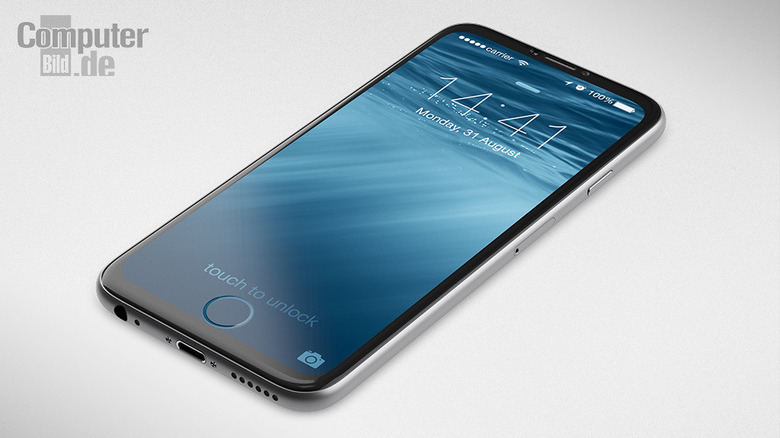Breakthrough Innovation Could Pave The Way For A Radically Redesigned iPhone
Apple is already looking at ways of radically changing the iPhone design, although we're virtually certain that any big changes won't occur this year. However, new glass technology developed by one company might come in handy if Apple is really serious about making radical changes to the iPhone's iconic home button.
DON'T MISS: Apple hires another major talent for its top-secret car project
Sonovation announced on Tuesday that it can insert ultrasonic biometric sensors under a Gorilla Glass display, and the device would still be able to read a user's fingerprints.
That's the kind of tech Apple is also studying, according to some reports, as a way to remove the Home button from the iPhone, iPad and iPod touch. This breakthrough innovation would let Apple finally remove the Home button from its devices, something some iPhone users have asked for years.
As it is now, Apple can't ditch the Home button as long as it hasn't fixed the Touch ID problem. The fingerprint sensor is embedded in the Home button, so removing the button would mean that Apple would either have to relocate its Touch ID button or include it in the iPhone's screen. The latter choice seems to be where Apple is heading, according to certain Apple patents that were recently uncovered.
Sonovation's technology works with Gorilla Glass displays, which cover a large variety of smartphones and tablets.
The tech "is well suited for through-the-glass fingerprinting and specifically architected to deliver advanced security and ease-of-integration into mobile and IoT devices," Sonovation's CTO Rainer Schmitt said.
The company says it can even scan fingerprints on a finger that's wet, dirty or oily, adding that its new product might offer a better performance than anything on the market.
It's not clear what the first devices to pack Sonovation-based fingerprint sensors will be, but it's likely future iPhones and flagship Android handsets will continue to offer fingerprint-based features and that some of these devices might as well employ Sonovation's interesting new sensor.
This year, Apple will introduce an "S" generation of iPhones, which means they're going to be pretty similar to last year's models, including Home button and Touch ID placements. Apple's first major iPhone redesign is expected for the iPhone 7 that will launch in 2016.
